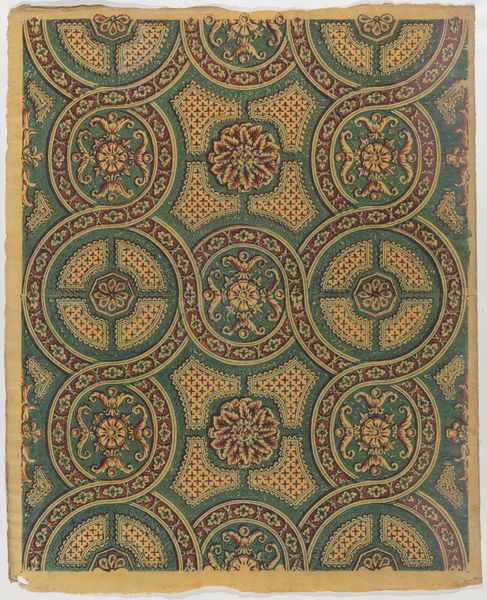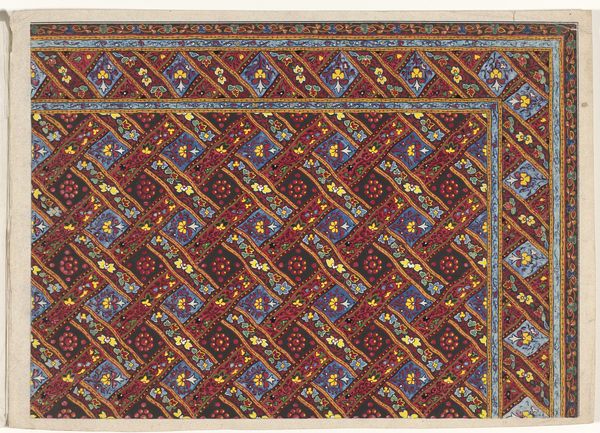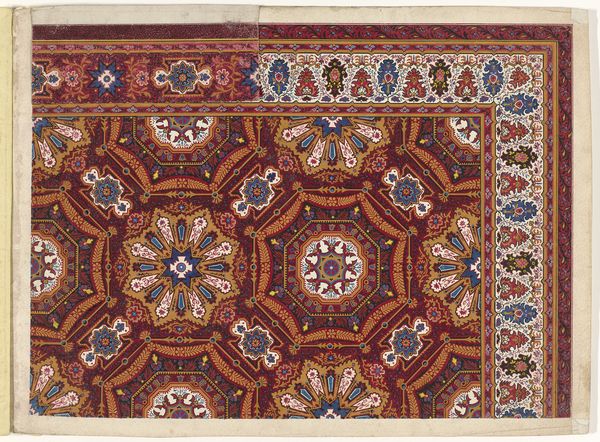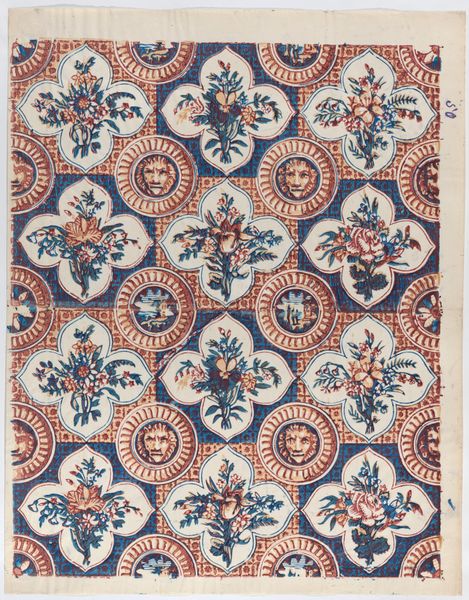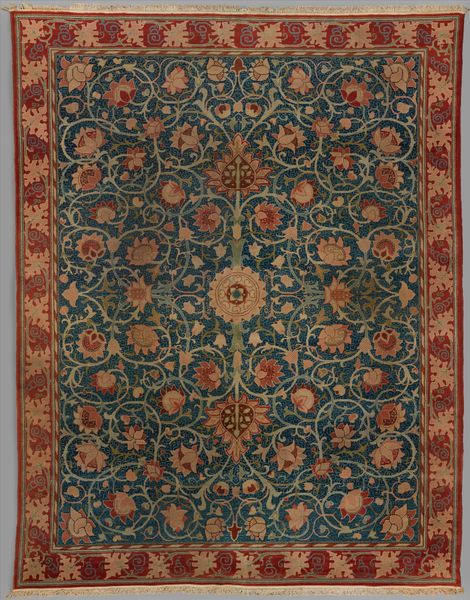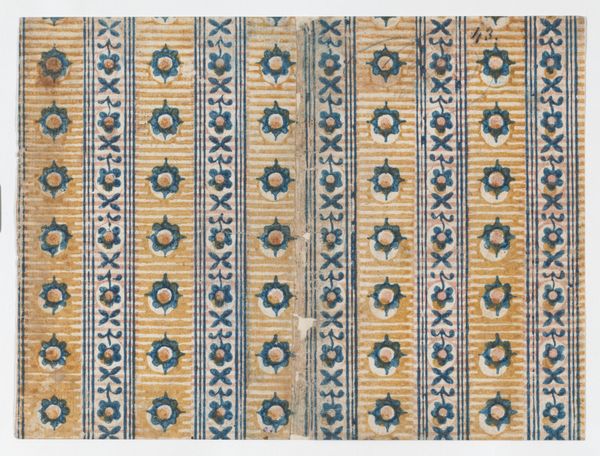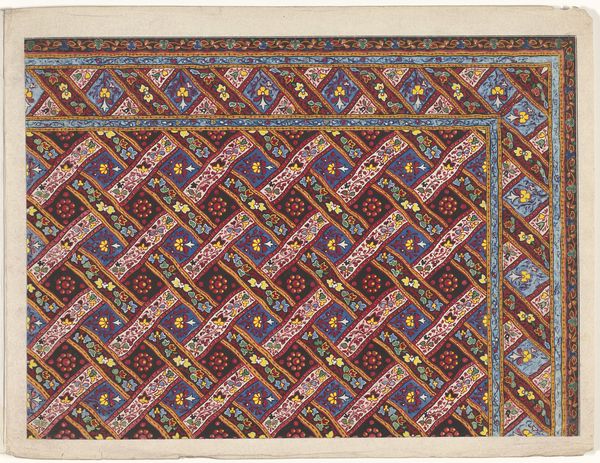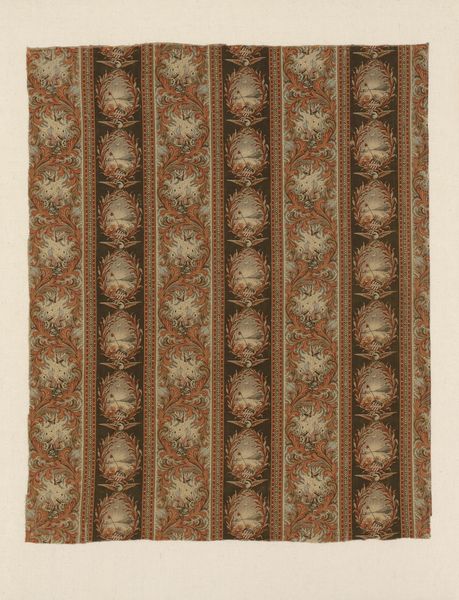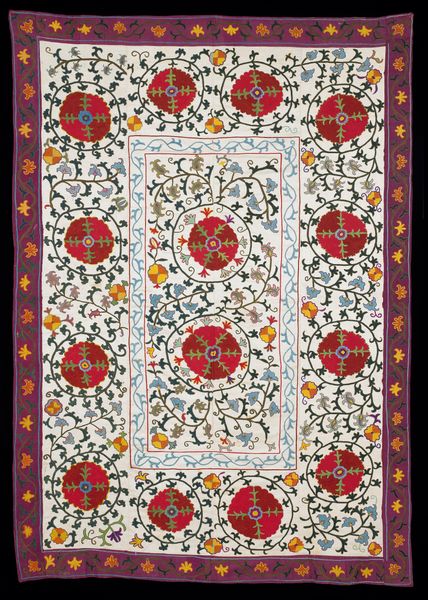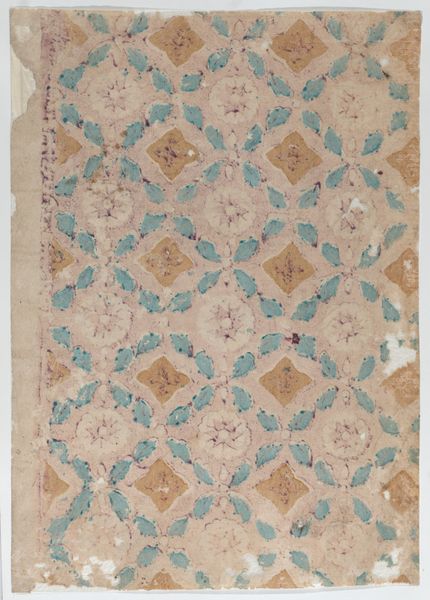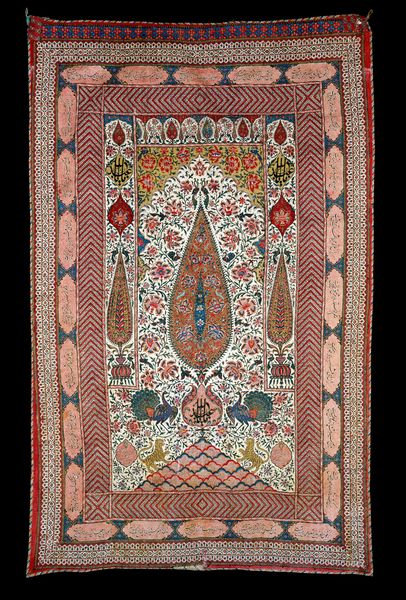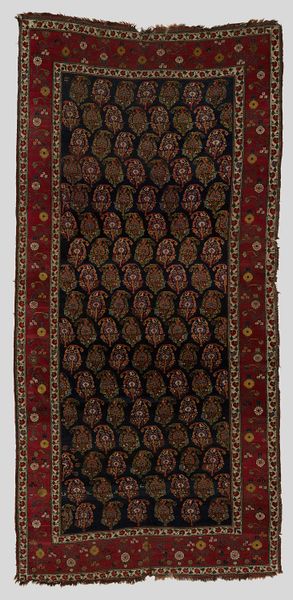
Sheet with two borders with three bands each containing five wreaths 1775 - 1875
0:00
0:00
Dimensions: Sheet: 18 1/4 × 14 3/16 in. (46.4 × 36.1 cm)
Copyright: Public Domain
Curator: This work, found at the Metropolitan Museum of Art, is titled "Sheet with two borders with three bands each containing five wreaths." It's from the period 1775 to 1875 and is a textile design. What are your initial impressions? Editor: Visually, it reads like a study in repetitive labor. The tight, bordering wreaths and floral patterns suggest a meticulous, almost painstaking process of creation. I'm immediately drawn to the materiality, thinking about what the textile worker's experience would be. Curator: Absolutely. This was an era where textile production reflected broader power dynamics. Think about the conditions surrounding textile creation during that time—the social and political context is vital. This design could speak volumes about gendered labor roles, too. The artistry may reflect or subvert established hierarchies of design. Editor: Exactly. This moves beyond aesthetic appreciation. I wonder what the labor conditions were like for those producing fabrics with designs like this. Mass production has its costs, so how do these choices of repetition impact artistic skill? And in turn, the workers? Curator: And who would be consuming the textile featuring these prints? Access to such patterned cloth would depend on societal standing. Examining its provenance reveals a narrative about commerce and class. Who could afford to have such detailed decorative borders within their home? Editor: You're prompting a line of inquiry focused on production, consumption and its role as a decorative good. Rococo screams "status symbol." The level of intricacy signals high material value for someone in the period, which must’ve necessitated significant inputs of manual labor and expense. Curator: Furthermore, textiles are deeply interwoven with personal expression and identity. Was it a statement? An attempt to reflect the values and aspirations of the individual? The history here must extend past design to meet cultural importance and understanding of a people. Editor: Thinking about material means and process helps ground these big ideas. By studying the labor and craft, we appreciate design elements differently. It opens further inquiry into its cultural use. Curator: Indeed. By questioning this design through intersecting lenses of social hierarchy and consumption habits, we expand upon its potential. Editor: A view I greatly value. Seeing through the materials lets us engage with labor in unique ways.
Comments
No comments
Be the first to comment and join the conversation on the ultimate creative platform.

